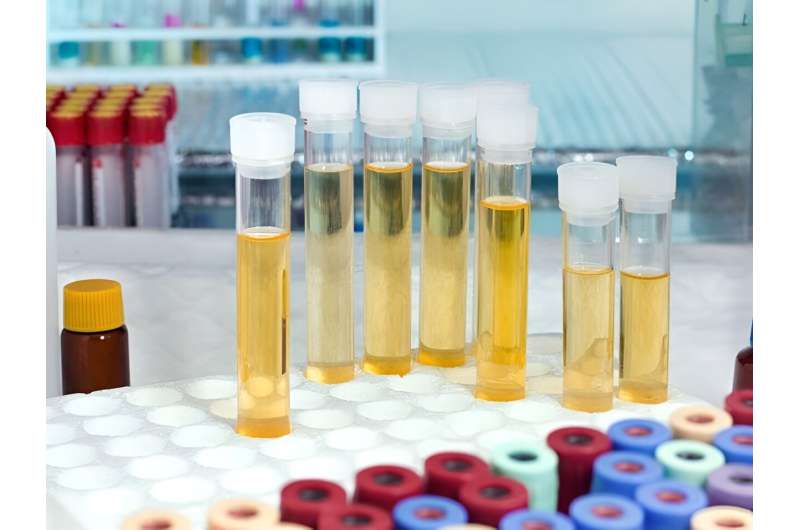This article has been reviewed according to Science X's editorial process and policies. Editors have highlighted the following attributes while ensuring the content's credibility:
fact-checked
peer-reviewed publication
reputable news agency
proofread
Urinary biomarkers can differentiate IC/BPS from other LUTDs

Urinary biomarkers can differentiate interstitial cystitis/bladder pain syndrome (IC/BPS) from other lower urinary-tract dysfunctions (LUTDs) in male patients, according to a study published online July 27 in the International Journal of Molecular Sciences.
Wan-Ru Yu, from the Buddhist Tzu Chi General Hospital in Taiwan, and colleagues enrolled 198 men with lower urinary tract symptoms and collected urine samples before medical treatment to analyze urinary biomarkers that could differentiate IC/BPS from other LUTDs.
The urine samples were examined for 11 urinary inflammatory biomarkers (eotaxin, interleukin [IL]-6, IL-8, C-X-C motif chemokine ligand 10, monocyte chemoattractive protein-1 [MCP-1], macrophage inflammatory protein-1β, RANTES, tumor necrosis factor [TNF]-α, nerve growth factor, brain-derived neurotrophic factor, and prostaglandin E2) and three oxidative stress biomarkers (hydroxy-2-deoxyguanosin [8-OHdG], 8-isoprostane, and total antioxidant capacity [TAC]).
Among the patients, IC/BPS was diagnosed in 48, bladder-outlet obstruction (BOO) in 66, detrusor overactivity (DO) in 25, hypersensitive bladder (HSB) in 27, and poor relaxation of the external sphincter in 15; 17 patients were normal. The researchers found that compared with all other LUTD subgroups, patients with IC/BPS had significantly higher levels of eotaxin, MCP-1, TNF-α, 8-OHdG, and TAC.
The highest sensitivity, specificity, positive predictive value, and negative predictive value for discriminating IC/BPS from all other LUTD subgroups and the BOO, DO, or HSB subgroups was seen for TNF-α and eotaxin, alone or in combination. MCP-1, 8-OHdG, and TAC did not have a diagnostic value between male patients with IC/BPS and the BOO, DO, or HSB subgroups.
"Male patients with IC/BPS had higher inflammatory urinary biomarkers eotaxin and TNF-α than that in patients with BOO, DO, and HSB, indicating that the IC symptoms are associated with a higher inflammatory condition of the urinary bladder," the authors write.
More information: Wan-Ru Yu et al, Use of Urinary Biomarkers in Discriminating Interstitial Cystitis/Bladder Pain Syndrome from Male Lower Urinary Tract Dysfunctions, International Journal of Molecular Sciences (2023). DOI: 10.3390/ijms241512055
Copyright © 2023 HealthDay. All rights reserved.




















